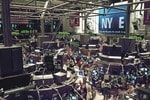
Why Did SoFi Stock Drop?
Fintech platform SoFi (NASDAQ:SOFI) has stumbled in recent days, selling…


Fintech platform SoFi (NASDAQ:SOFI) has stumbled in recent days, selling…

Recently, online brokerage Robinhood (NASDAQ:HOOD) has been focused on introducing…

With the market starting to look skittish on pure-play AI…
Market Cap: $4.4T
P/E Ratio: 62x
Market Cap: $4.1T
P/E Ratio: 37x
Market Cap: $3.9T
P/E Ratio: 40x
Treasure Global, Inc. [TGL] is up 31.68% over the past day.
SMX (Security Matters) Plc [SMX] is down 45.78% over the past day.
Praxis Precision Medicines, Inc. [PRAX] is up 8.15% over the past day.